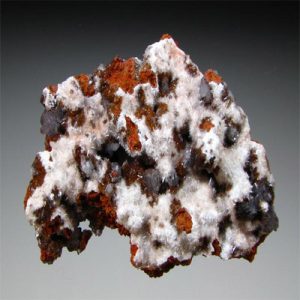Hydrozincite
Hydrozincite is also called marionite or zinc bloom, is in a white carbonate mineral consisting of Zn5(CO3)2(OH)6, It is always found in massive other than crystalline form. Hydrozincite is typically discovered as massive, earthy, powdery aggregates and encrustations of extremely small to microscopic crystals that are often opaque white. Crystals transparent/translucent and big enough to facet are extremely unusual. Hydrozincite is an alteration product of Hemimorphite, Smithsonite or Sphalerite. Its color is typically white to gray but could also be stained a number that is wide of by impurities with yellowish and brownish to pinkish hues being most common. It happens as much an oxidation manufacture regarding zinc ores then as like put up mine incrustations. It occurs associated including smithsonite, hemimorphite, willemite, cerussite, aurichalcite, calcite, and limonite. It used to be advance described between 1853 because an occurrence of Bad Bleiberg, Carinthia, Austria yet named because its chemical content
Hydrozincite mineral specimens may be confused with the zinc that is visually similar Brianyoungite. Or, it might be assumed to be some other more mineral that is common as Aragonite or Calcite. Hydrozincite is worldwide that is common facetable crystals are very unusual. One supply of these crystals is Zhejiang Province, China.
| Category: | Carbonate mineral |
| Formula: | Zn5(CO3)2(OH)6 |
| Crystallography: | Monoclinic – Prismatic |
| Crystal Habit: | Crystals usually very small to microscopic, lath-like or bladed, flattened on {100} and elongated [001], often tapering to a sharp point. Typically found as massive aggregates of either powdery material, earthy and porous, to the compact material, with fibrous radial structure, maybe reniform. Dense agate-like masses, stalactic, and pisolitic. |
| Twinning: | Contact twins on [100] |
| Cleavage: | [100] Perfect |
| Fracture: | Irregular/Uneven |
| Tenacity: | Very Brittle |
| Hardness (Mohs): | 2.0 – 2.5 |
| Density: | 3.50 – 4.00 (g/cm3) |
| Luminescence: | Fluoresces pale blue to lilac under SW UV |
| Radioactivity: | Not Radioactive |
| Other: | Readily soluble in acids |
| Color: | Colorless, White, Gray, pale shades of Yellow, Brown, Pink, Green, spherules may be concentrically color banded |
| Transparency: | Transparent to Translucent, Opaque |
| Luster: | Pearly, Silky to Dull or Earthy in aggregates |
| Refractive Index: | 1.630 – 1.750 Biaxial ( – ) |
| Birefringence: | 0.1200 |
| Dispersion: | Strong; r < v |
| Pleochroism: | None |


